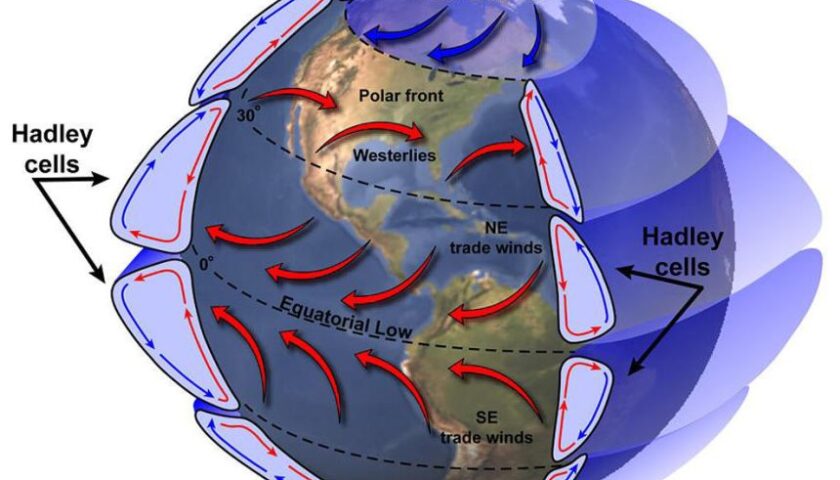Earlier this month, Venus Aerospace, a Houston-based aeronautics startup, released renderings for Stargazer—an incredibly fast high-altitude vehicle it’s hoping to develop. The Venus Vehicle Engineering Team has been working on this iteration since the company’s founding in 2020. ‘Stargazer’ has been touted as Mach 9 Space plane, capable of one hour global travel. The vehicle is being designed to hold 12 passengers while it travels at an altitude of 170,000 feet (51.8 km).
What is Hypersonic?
Mach 1 is the local speed of sound. Speeds between Mach 1 and Mach 5 are supersonic, whereas those exceeding Mach 5 are hypersonic. Hypersonic refers to vehicles or missiles capable of traveling Mach 5 or faster, and Stargazer has the potential to reach Mach 9, or nine times the speed of sound.
Militaries have pursued hypersonic aircraft for almost a century, though with limited success. In the late 1930s Austrian engineer Eugen Sänger and German physicist Irene Bredt designed the first hypersonic aircraft, a glider called the Silbervogel. It was to be launched from a rocket, fly primarily within the atmosphere and, like any other glider, stay aloft using aerodynamic lift, but Nazi planners decided it would be too difficult and expensive to build. During World War II, German engineers developed rocket engines, which burn propellant, a mixture of fuel and chemical oxidizer, to release an intense burst of energy. In subsequent decades, experimental rocket-powered aircraft broke speed record after speed record. In October 1947 the rocket-propelled X-1 became the first piloted aircraft to officially break the sound barrier—crossing Mach 1—and in the 1960s the X-15 reached Mach 6.7 during tests. The strong g-forces produced by rocket engines placed extreme demands on human physiology, so piloted rocket-propelled aircraft never became more than experiments. Another technology developed in this era, the jet engine, became the workhorse of military and commercial travel, however. Drawing in atmospheric oxygen to continuously burn fuel, a jet engine does not carry the extra weight of an oxidizer. It enables long-distance transport and maneuverability without the extreme acceleration of rocket engines. Today the fastest official speed for a piloted jet aircraft stands at approximately Mach 3, which the Lockheed SR-71 Blackbird reached in July 1976.
Meanwhile hypersonic vehicle ambitions continued to soar—and drop.
What defines Space Travel?
These days, spacecraft are venturing into the final frontier at a record pace. Space tourism is more than a decade old phenomenon of tourists paying for flights into space. Space tourism is prohibitively expensive and to earn astronauts wings, high flying tourists have to make it past the so-called Kármán line.
What is Kármán line?
The Kármán line is based on physical reality in the sense that it roughly marks the altitude where traditional aircraft can no longer effectively fly. Anything traveling above the Kármán line needs a propulsion system that doesn’t rely on lift generated by Earth’s atmosphere — the air is simply too thin that high up. In other words, the Kármán line is where the physical laws governing a craft’s ability to fly shift. This boundary sits some 62 miles (100 kilometers) above Earth’s surface, and it’s generally accepted as the place where Earth ends and outer space begins. The answer is partly based on physical reality and partly based on an arbitrary human construct. That’s why the exact altitude where space begins is something scientists have been debating since before we even sent the first spacecraft into orbit.
Alternative boundaries of space
The question next comes – why is it important to define the boundary? Physicists, lawyers and historians may need a boundary of space for different purposes and to address different questions. The ‘edge of space’ might be defined differently in different international fora. Nevertheless it is useful for those definitions to be based on a common and accurate understanding. Once this line is accepted, anything below it will fall under national jurisdiction just like territorial waters and above it would be free space.
Various layers of atmosphere or its true outer edge are also reasonable candidates for the defining space. Different conventional limits which have defined human space or robotic exploration can also be used to define the boundary.
- boundary between LEO and MEO corresponding to 2000 km.
- Geosynchronous altitude – 35786 km above the equator
- Earth-Moon 1:4 resonance altitude EL1:4, 145688 km altitude
- The Hill Sphere, bounded by the Earth-Sun Lagrange points, with a radius of 1.496 million km.
Defining any boundary will not preclude use of weapons beyond the boundaries with space as a medium. So as an aviation enthusiast, I will not give any special attention to the boundary and would be happy to use different boundaries for different purposes.



